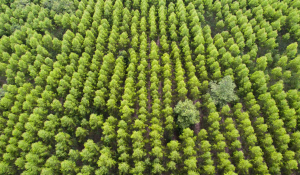Why Avoidance Credits are not Inherently Inferior to Removal Ones
There are trends in every industry, and the voluntary carbon market (VCM) is no exception. Since 2021, there has been more demand for removal credits which trade at a premium compared to avoidance ones. Some Improved Forest Management (IFM) projects can generate both types of credits, and within the same project, removal credits can sell up to 50% higher than avoidance ones. However, having a simplistic view and not considering avoidance projects for climate contributions may have adverse consequences for climate, nature, and people.
Misconception of the Corporate Net-Zero Standard
The launch of the first version of the Corporate Net-Zero Standard (CNZS) in October 2021 by the Science Based Targets initiative (SBTi) entailed consequences for avoidance projects that the standard-setter of corporate climate claims itself surely did not expect.
Under the CNZS, most companies must cut Greenhouse gas (GHG) emissions by at least 90% no later than 2050. Once they manage to do so, the remaining GHG emissions, being the final 10% or less, must be neutralized with permanent carbon removals. In other words, neutralizing residual emissions is the last milestone of the marathon against climate change. In the meantime, as part of their Beyond Value Chain Mitigation (BVCM), organizations should not disregard carbon avoidance, as clarified in a series of articles published by the SBTi in 2022. Examples of avoidance projects cited by the climate action arbiter include high-quality, jurisdictional REDD+ carbon credits. For more information on the various types of carbon avoidance credits, please read our article.
The fight against climate change is such a challenge that we cannot afford to privilege one solution at the expense of others. Contributors should focus on taking meaningful intermediate steps, rather than fixating solely on a long-term and hypothetical net-zero target.
Common Principles Applicable to any Type of Project
The various controversies, such as the REDD+ campaign led by the Guardian in January 2023 or a study from Berkeley University on cookstove methodologies published a year later, denounced the rampant over-crediting of some of these projects. This should not give buyers the false impression that removal projects are immune to these scandals. REDD+ projects prevent deforestation and degradation; the avoidance part is, by nature, less tangible than measuring the growth in aerial biomass.
However, every project type relies on a counterfactual scenario, i.e., what would have happened in the absence of the project. By definition, since the project was implemented, it is impossible to determine this counterfactual scenario with complete certainty. In the case of nature-based removal projects, if the trees would have been planted in any case or if the trees would have grown anyway without project intervention, this should not generate carbon credits.
Besides, the additionality of some Afforestation, Reforestation, and Revegetation (ARR) projects is questionable, especially when they are implemented by timber conglomerates and are profitable per se. Conversely, smallholder agroforestry systems are more likely to be additional as they do not bring significant revenue.
Carbon credit rating agencies themselves reported this lack of quality in some ARR projects. Renoster’s findings suggest that, on average, removal projects underperform compared to certain reduction projects due to issues of additionality. After assessing 600 projects, Calyx highlighted that the overall VCM suggested no quality difference between removals and avoidance.
Nature-based projects, whether they are removal or avoidance, present a risk of non-permanence if the carbon sequestered in the trees is released back into the atmosphere further to wildfire, storms, or pests. By contrast, household devices generally present a low risk of reversal. For instance, biodigesters that cut methane emissions from manure decomposition are non-reversible, and the avoidance of fossil fuels, thanks to the renewable energy produced, represents permanently avoided emissions.
For more information on household communities and biogas in the VCM, please read our article.

Side-Effects on Climate, Nature, and People
Addressing climate change with a narrow perspective could worsen the problem and harm both the planet and its people. In the case of regenerative agriculture, the focus on soil sequestration only may, paradoxically enough, lead to a general increase in GHG emissions due to more inputs and the increased use of nitrogen fertilizers. A study published in Nature communications in March 2024 revealed that planting trees in the wrong places could contribute to global warming due to changes in the albedo effect. This can also jeopardize food security if the saplings are on arable lands.
Some ARR projects using fast-growing and invasive species seek to maximize carbon sequestration at the expense of other environmental indicators, such as biodiversity or water resources. This “removal only” strategy from buyers can also create an aberration where a hectare of degraded forest is worth more than a hectare of preserved forest. To counteract this, some project developers involved in both project types are asking companies to match their carbon removal spending with an equal investment in intact ecosystems. Not only are existing forests fantastic carbon sinks, but they are also significant biodiversity hotspots. Clearing or letting them degrade along with their fauna and flora cannot be compensated by afforestation projects on lands that are not necessarily appropriate: humans will never be able to recreate destroyed ecosystems whose loss is irreversible.
Finally, organizations must emancipate themselves from a Western bias that can quickly turn into ethnocentrism. A minority of VCM buyers in developed countries tend only to consider engineered removals such as direct air capture. They should remember that what they take for granted, such as access to safe drinking water and clean energy, is still a daily challenge in the Global South. Currently, 2.1 billion people worldwide (a third of the global population) are cooking using open fires or inefficient stoves. This generates harmful household air pollution, responsible for an estimated 3.2 million deaths annually in 2020. Many improved cookstoves are not viable without carbon finance. Supporting those projects truly helps vulnerable populations in their transition towards a more sustainable future.
Check out our articles for more information on the future of cookstove projects, and how cookstoves support SDGs.
Scientists are now raising their voices to warn against recent media reports suggesting that efforts to combat climate change by reducing tropical deforestation are a scam. This misstatement is harmful and undermines crucial conservation efforts. The reluctance to support REDD+ projects, even the great ones, is not a practice we encourage at ClimateSeed. Instead of focusing on the project type in their carbon credit strategy, climate contributors should consider the quality of the projects first, together with their co-benefits, and endeavor to build a balanced portfolio with the assistance of dedicated experts.
Sources:
Common Q&As
Projects in the voluntary carbon market that generate emission avoidance credits do so by achieving reductions through energy efficiency, replacing fossil fuels with renewable energy, and avoiding degradation and destruction of natural carbon sinks by perceiving natural ecosystems.
We group these projects as follows; Agricultural Forestry and Other Land Use, Renewable Energy, Household and Community Devices, Waste Management, and Transportation.
For more information, read our article: What are Carbon Avoidance Credits? Types and Benefits Explained.
One of the primary social benefits of biogas systems is the improvement in household air quality. Traditional cooking methods, such as burning wood or charcoal, generate harmful smoke and indoor air pollution.
For more information, please read our article: Biogas & Household Communities in the VCM: Reducing Emissions & Empowering Communities.
Cookstove projects achieve emissions reductions by working towards two main issues: black carbon emissions and deforestation emissions.
For more information, read our article: Cookstoves Projects: Giving an Access to Clean Cooking.
Share this
You May Also Like
These Related Stories

What are Carbon Avoidance Credits? Types and Benefits Explained

Biogas & Household Communities in the VCM: Reducing Emissions & Empowering Communities


